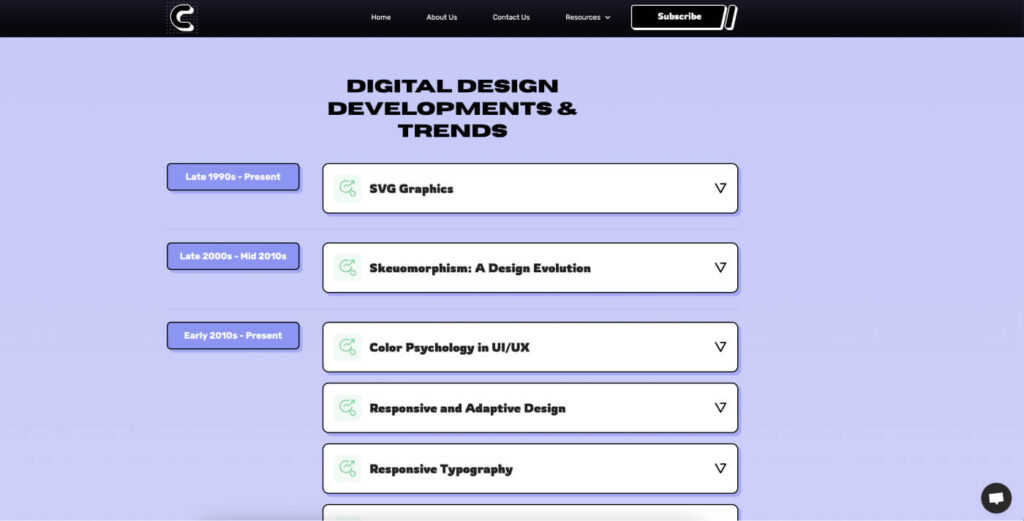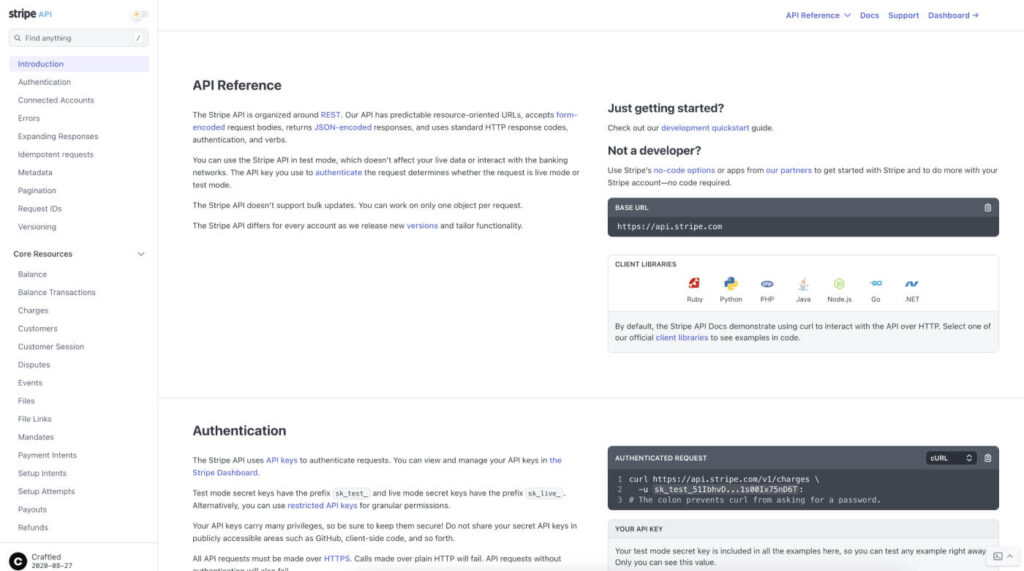Diving into the world of technical writing, we’ve gathered insights from Co-Founders to Editors, highlighting four exceptional examples that stand out for their clarity, practicality, and accessibility.
From a piece that showcases design trends with clarity to a structured guide to website development, discover what makes these contributions exemplary and how to create high-quality, useful technical content.
- Showcasing Design Trends with Clarity
- Stripe’s API Is a Model of Excellence
- Cybersecurity Explained for All Readers
- Structured Guide to Website Development
Showcasing Design Trends with Clarity
As a web designer, I find exceptional technical writing to be a valuable resource.
Our own resource, Digital Design Developments & Trends, exemplifies this perfectly. It’s clear explanations and engaging timeline format resonate with designers of all levels.
Technical writing example from CC Creative Design, illustrating digital design developments & trends…

By showcasing the impact of design trends and catering to various skill sets, the blog offers actionable insights. This focus on user experience ensures our content remains informative and useful.

Juan Carlos Munoz, Co-Founder, CC Creative Design
Stripe’s API Is a Model of Excellence
Stripe’s API documentation is outstanding for several reasons:
- Clear organization and navigation. The documentation is logically structured, with a clear table of contents and easy-to-use navigation. This allows developers to quickly find the specific information they need.
- Concise, direct writing style. The content is written in short, straightforward sentences that get right to the point. There is no fluff or unnecessary information. Each sentence provides essential details for using the API.
- Useful code samples. In addition to textual explanations, the docs provide clear, commented code samples in multiple programming languages. These code snippets help developers understand how to implement the API in practice.
- Scannable formatting. The docs make great use of headings, subheadings, lists, and tables to break up the content and allow for easy scanning. Important notes and warnings are called out visually.

To produce high-quality technical content like this, I recommend:
- Knowing your audience and their needs
- Organizing information logically
- Using simple, direct language
- Providing examples and visualizations
- Getting technical reviews to ensure accuracy
- Iterating based on user feedback
By following these principles, you can create technical documentation that is truly valuable and informative for your target readers. The key is to always keep the end user in mind and focus on clarity above all else.

Gustav Nicholson, Editor, Ampifire
Cybersecurity Explained for All Readers
Can someone who does not understand the technical details understand the writing? Yes? Then it’s successful.
In the above article, we hit on the technical details but don’t get lost in them, so it’s possible for someone who isn’t a cybersecurity expert to understand the details of the security lapse. However, if someone wants to, they can Google the details and learn exactly what went wrong.

Bill Mann, Privacy Expert at Cyber Insider, Cyber Insider.
Structured Guide to Website Development
An excellent example of writing can be found in the article titled Creating a Website for Your Business: From Idea to Launch 2024 on our website.
This piece is notable for its language and easy-to-follow structure. The article is also divided into sections, each focusing on a stage of the website development process, making complex information understandable for readers with varying levels of technical knowledge. Notice that there’s also lots of white space, making it more readable, as well as links to technical terms not known by many.
Additionally, the inclusion of aids and examples adds depth to the article, making it easier to comprehend the topic at hand. To create top-notch content that is both informative and practical, it’s crucial to prioritize clarity, stick to a well-defined structure, and incorporate visuals to complement the text whenever possible.

Tristan Harris, Demand Generation Senior Marketing Manager, Thrive Digital Marketing Agency.
